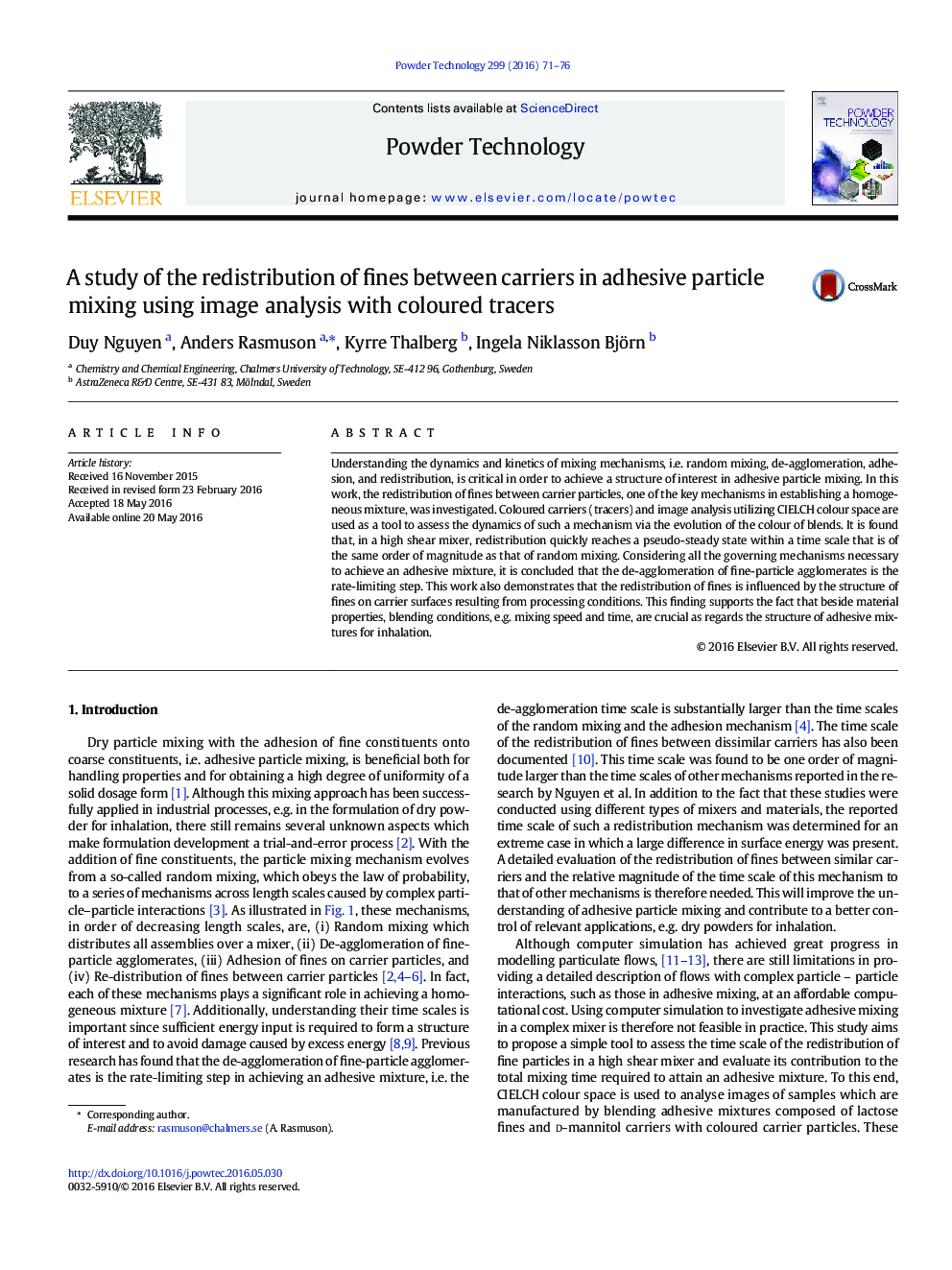| Article ID | Journal | Published Year | Pages | File Type |
|---|---|---|---|---|
| 234922 | Powder Technology | 2016 | 6 Pages |
•CIELCH colour space is used to evaluate adhesive mixing behaviour.•The redistribution of fines is as fast as random mixing.•The redistribution of fines is affected by the structure of mixtures.•Mixing speed affects the structure of adhesive mixtures.
Understanding the dynamics and kinetics of mixing mechanisms, i.e. random mixing, de-agglomeration, adhesion, and redistribution, is critical in order to achieve a structure of interest in adhesive particle mixing. In this work, the redistribution of fines between carrier particles, one of the key mechanisms in establishing a homogeneous mixture, was investigated. Coloured carriers (tracers) and image analysis utilizing CIELCH colour space are used as a tool to assess the dynamics of such a mechanism via the evolution of the colour of blends. It is found that, in a high shear mixer, redistribution quickly reaches a pseudo-steady state within a time scale that is of the same order of magnitude as that of random mixing. Considering all the governing mechanisms necessary to achieve an adhesive mixture, it is concluded that the de-agglomeration of fine-particle agglomerates is the rate-limiting step. This work also demonstrates that the redistribution of fines is influenced by the structure of fines on carrier surfaces resulting from processing conditions. This finding supports the fact that beside material properties, blending conditions, e.g. mixing speed and time, are crucial as regards the structure of adhesive mixtures for inhalation.
Graphical abstractFigure optionsDownload full-size imageDownload as PowerPoint slide
